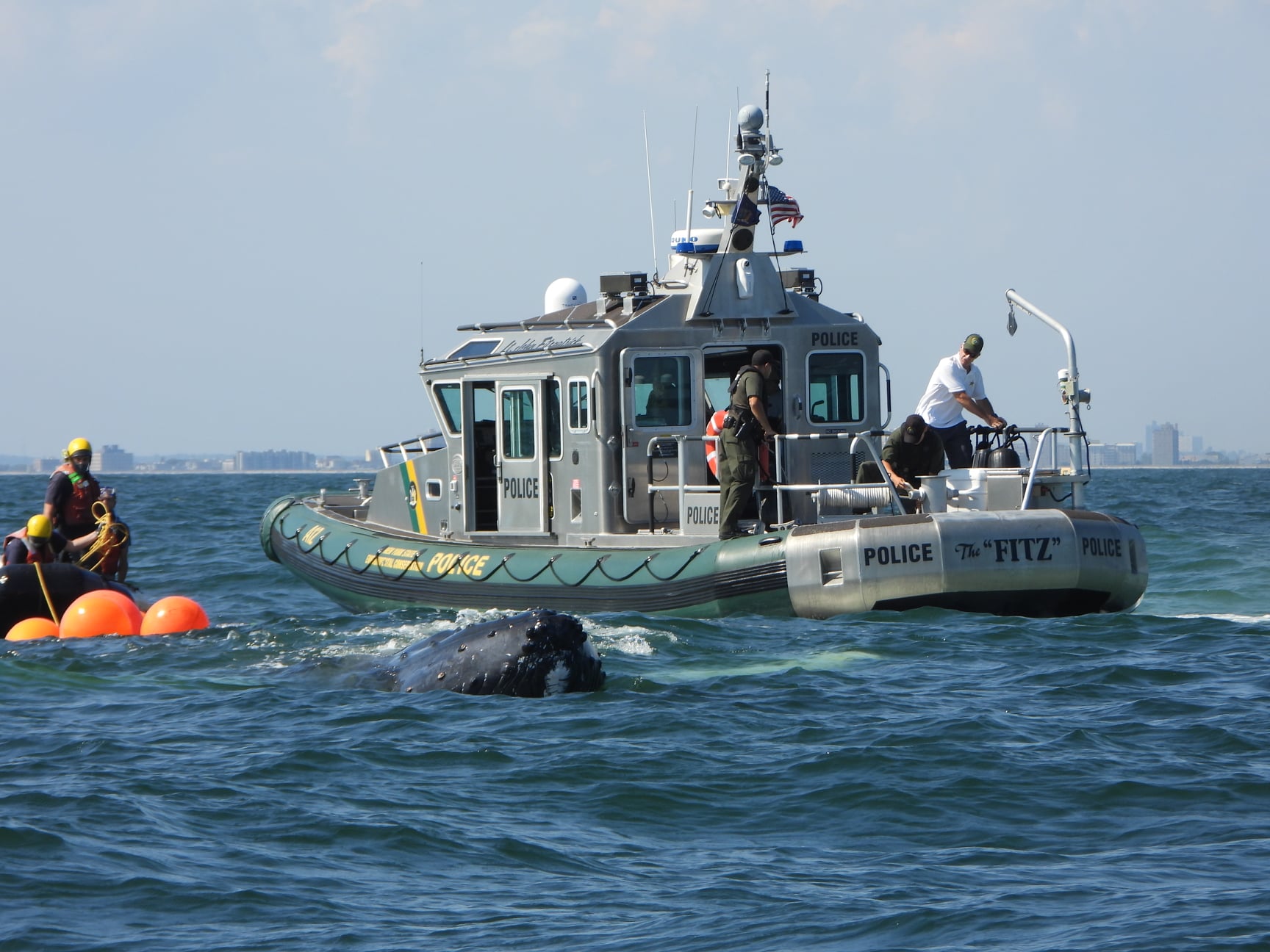A humpback whale tangled in fishing gear was freed in a complex four-day operation in New York’s busy Ambrose Channel, according to federal and state officials.
Recreational boaters first reported seeing the distressed whale July 27 to the Coast Guard, which notified the National Oceanic and Atmospheric Administration, according to a narrative released by NOAA.
The Atlantic Marine Conservation Society, a New York group that conducts marine mammal rescues, consulted with the Center for Coastal Studies in Provincetown, Mass., before joining staff from the New York State Department of Environmental Conservation on their vessel to assess the whale’s condition.
“It appeared to be anchored in place but staff could not see any entangling material,” according to the NOAA account. “In this case, the threats to the whale were multiple: it could not perform normal behaviors, such as feeding, and was at severe risk of being struck by ships or attacked by predators. It was anchored to the sea floor and could barely make it to the surface to breathe.”
The New York team returned to the whale the next day to take more photos and verify how the gear tangle was wrapped and holding down the whale’s tail. Consulting with the Center for Coastal Studies and NOAA experts, they devised a rescue plan.
On Wednesday July 26 Turtles Fly Too, a volunteer aviation group that assists in marine mammal rescues, flew a CCS team with their gear to New York, where they met up with AMSEA staff and launched from Jones Beach State Park.
“By Wednesday afternoon, the disentanglement team was able to remove multiple buoys and make cuts through pieces of entangling gear around the whale’s flukes,” according to the NOAA account. “Despite their best efforts, the whale was still anchored in place, and the team had to leave the whale when it got too dark to continue safely.”
On their return Thursday morning, the team was joined by a flotilla including the Monmouth University research vessel Heidi Lynn Sculpthorpe, carrying a team member from the Northeast Fisheries Science Center’s Sandy Hook lab, and the Corps of Engineers drift collection vessel Hayward, which usually uses its heavy lift crane to clear debris in the harbor.
The crews used heavy equipment to secure and haul up some of the tangled gear, taking off weight which allowed the CCS team to make cuts and relieve pressure on the whale’s body.
“Around 4 p.m., final cuts were made releasing the whale from a very large and complicated entanglement,” according to NOAA. The whale sawm free, apparently without severe injury but with lacerations over most of its body.
“That was among the more challenging whale disentanglement cases we have dealt with. That whale was fighting to live. All the folks we were working with on the water the last two days were fighting to help it”, said Scott Landry, director of marine animal entanglement response for the Center for Coastal Studies . “Without intervention that whale would not have survived. While it’s not entirely out of the woods yet, it’s prospects are now 100 percent better than what they were. We are optimistic we will see the whale again and like the majority of humpback whales off our coast it will bear the scars of entanglement.”







